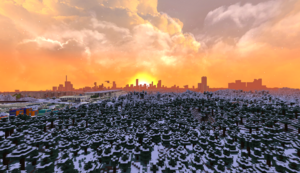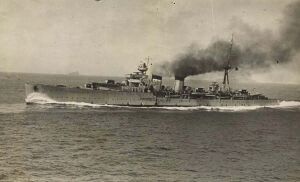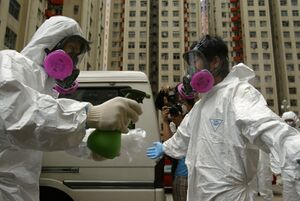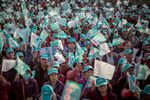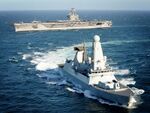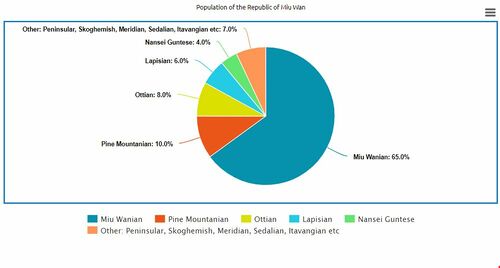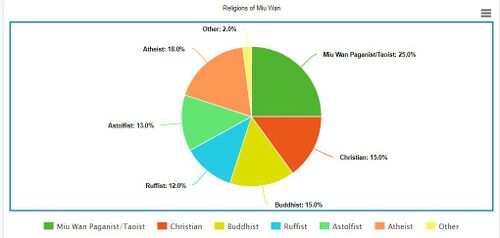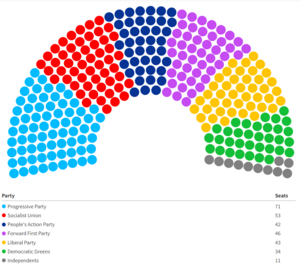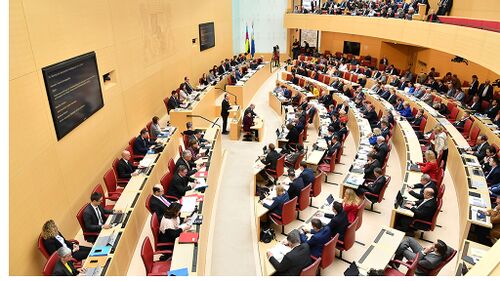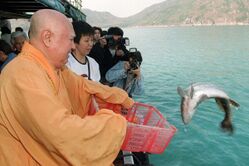Republic of Miu Wan
| Republic of Miu Wan | |
|---|---|
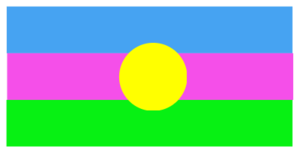 | |
| Government | |
| President | HarborRandom852 |
| Information | |
| Official Languages | English, Cantonese, Mandarin |
| Capital | Miu Wan |
| Largest City | Miu Wan |
| Demonym | Miu Wanians |
| Towns | 19 |
| Population | 65,784,502 |
| HDI | 0.781, High |
| Currency | Miu Wan Dollar |
| Legislative Chambers | Parliament |
| Driving Side | Primarily Left |
The Republic of Miu Wan (more commonly referred to as simply Miu Wan or the ROMW) is a nation in the Northern regions of the New World, it borders the Hibernal Sea to the east and north. The nation is mostly located in a snowy plains biome.
History (Lore)
Prehistoric Era
The first human settlements in what is now the Republic of Miu Wan were established around 5,000 years ago near the tip of Hok Wan. The only Paleolithic burial that has been found in Miu Wan was in Aima cave in the southeastern areas of the country, dating from about 4000 BC.
A human skeleton known as the Wushang Man dating back to 3,200 years ago was found underneath a track of the Lanark-Laclede Express.
Kwongpak Kingdom
Around 970 BC what is now referred to as Tongwu Civilisation centralised and became the Kwongpak Kingdom. The first king was Jan Tong whom legend said, descended from the heavens riding a Jade Goat which was sacrificed to the gods after Jan Tong's coronation. However the first king was actually King Tai Hong, who was enthroned around 1210 BC. It is speculated that Jan Tong may have been created as a merger of various powerful kings.
Great Northern Empire
Miu Wan was ruled as a part of the Great Northern Empire between 19 BC and 198 AD, as Occalium Province, with its capital around present day Miu Sai known as Gwonglutia. Throughout the rule of the Great Northern Empire, the region remained largely stable even though it suffered from raiders from the west and south. There were some prevelant technological advancements as well as the construction of the region's first road network, which would be used as the blueprint for all future road networks. Furthermore, a wall was constructed in 75 AD around the west, though it was abandoned in 187 AD towards the end of the empire's presence in the region. By 196 AD, the empire was on the verge of collapse and as a result, it left the region leading to a power vacum.
Era of 7 Duchies and 1 Kingdom
The Era of 7 Duchies and 1 Kingdom lasted between 198 AD and 509 AD, with power being shared among 7 duchies who nominally paid tribute to the Paklong Kingdom, which was founded in 215 AD as the de-facto sucessor to Occalium. This status quo however, was fragile and was often broken up with power-hungry dukes trying to seek more control over the others, or even try and overthrow the Paklong Kingdom. For its part, there were also very ambitious Paklong kings who tried several times to incorporate the duchies, only to fail.
It wasn't until 489 AD when King Haomou, embarked on a campaign to finally unite the 7 duchies, having subjugated or bought together all the factions in his court, while also building up his military. Despite this, this campaign, latter known as the Paklong Unification War, would last until 509 AD when the final duchy surrendered.
Paklong Kingdom
Having defeated the 7 Duchies and consolidatedits power, the Paklong Kingdom rose to dominance in the region.
Long Dynasty (509-924)
Mong Dynasty (926-1358)
Sui Dynasty (1359-1421)
Yuet Dynasty (1424-1677)
Bak Dynasty (1683-1862)
With the fall of the Yuet Dynasty, a civil war broke out between two rival clans who had large control of the military: the Tuen Clan and the Bak Clan. Although it originally had the advantage, the Tuen Clan began losing in the civil war leading to the head of the clan surrendering in 1683. In return, they would be allowed to live albeit forbidden from politics.
In 1854, desperate to modernize, the then-king of the Paklong Kingdom: Chuifa, ordered a group of young intellectuals to travel around the world to learn about the modern world. By the time they came back, one and a half years had passed.
After some negotiations and resistance from members of the royal court such as the Duke of Cha Tin who was opposed to the idea of lessening the king's power, a proper de-facto parliament: the Royal Parliament was formed with the King having limited powers. Most of the seats were made up of independents but the majority belonged to the sole party: the Republican Party. During this time, the king was visibly and mentally aging and made plans for retirement. On June 18th 1859, in a secret meeting with certain individuals, the king made his plan to resign in a few years time to allow for a peaceful transition. Unfortunately, word spread of the king's desire to resign and many soon saw the opportunity to take power and restore Paklong to its traditional values. These people formed into several groups, with the three main groups being the White Dragon Society, White Lion Society and the Pearl Ocean Society, all of which wanted a more traditional form of monarchy and the removal of modern ideals from Paklong.
During this time, some delegates from other countries had visited Paklong in order to assist with modernization and the new idea of democracy such as Northern Peninsula and Nansei Gunto. They made their own districts to live in which led to some tensions between certain citizens. Tensions boiled when an official from Sedalia accidentally knocked over a priceless vase leading to increased tensions. One of the generals in the Paklong Army: Ng Wah-Chun decided to take over by force. He gathered his followers from the army, government and the masses in order to organize a coup.
On the morning of March 27th 1861, Ng's rebellion began by taking over major parts of Dong Nam Province, declaring the Xing Kingdom. This event became known as the Xing Rebellion in future historical texts. Some institutions in the capital of Miu Wan were also taken over by the rebels but were quickly taken by government forces. A standoff between the government and the Xing Kingdom lasted 37 days before Ng's rebellion surrendered due to a lack of supplies. Ng was sentenced to death but was lessened to life imprisonment after a deal was made behind closed doors, while others were either sentenced to life imprisonment as well or exiled. Chuifa seeing this, decided to make plans to abolish the Paklong Kingdom with the help of the Republican Party, believing that if the country remained a monarchy these issues would continue to persist.
On September 18th 1862, Chufa announced that he would be abdicate, while also allowing for a transition to a republican government: called the Republic of Miu Wan after the country's capital. While this sparked some outrage among the citizens, the vast majority accepted these changes, with promises of higher standards of living. Chufa would abdicate the next year on May 28th 1863, he would then live out his last years in a house in Tintong, where he died in 1874.
Early Republic Era [1863-1930]
The young government established 3 branches of government: Judicial, Executive and Legislative. The Royal Parliament was renamed to simply the Parliament and modified. All men (and later women in 1927) above the age of 18 were allowed to vote provided they were Miu Wan Citizens.
While the Republican Party had aimed to be the sole party in charge, this soon became impossible as more independents sprung. No political party would come forth until the New People Society emerged in 1872. The New People Society advocated for a stronger national identity, while also pushing for more control over districts owned by foreigners. Despite this, they remained mainly a minor party always outnumbered by the Republican Party. However, they soon not only won the Parliament but also the Presidency in 1887. This led to a schism in the Republicans, some of which joined the NPS while others would run as independents, though most would remain within the party.
Throughout their monopoly on power, the Republicans introduced freedom of religion and further lifting of controls on the press, it also promoted foreign cooperation and even hired advisers from foreign nations, which sparked some anger from more isolationist groups. It also created an universal education system, and later a unified telegram and telephone system.
When the NPS took power, they also focused on greater industralization and moving the country towards an industrial economy, exploiting the southern mines for resources such as tin, copper and iron, while also expanding the silk, food production and dairy industries. Furthermore, they also made the port of Bing Tan a free port, after reaching a deal with the Republicans. They would also expand Miu Wan's railway systems creating the predecessor to the MWR: The Miu Wan National Rail Corporation (MWNRC).
The Liberty Party was also formed a few years after the NPS took power and ran on more progressive ideals and policies compared to the other 2 parties. They first won the Presidency in 1893, where they focused on improving women's rights, though they were firmly against women's suffrage until much later on. They also focused on building relations with other countries especially Northern Peninsula.
There were also other parties such as the Liberal Republicans, a group of former Liberty and Republican politicians who became disillusioned with their respective parties, the Ivory Dragon Party which advocated for a return to monarchism, though it eventually disbanded in 1909, and the National Radical Party which was made up of former extreme NPS politicans.
The Republic of Miu Wan military would be formed a year after the republic was formed in 1864, being formed as a reorganization of the Paklong military. Throughout the latter half of the 19th century, the military would reform and modernize to be more on par with other militaries. It would fight its first conflict in 1897 when it fought a short war with PMW State over a trade dispute, though its first war would come much later in 1912 when it intervened on the side of the government in the Auroran Civil War. The Navy would also be created around the same time, also formed as a reorganization of the old navy, focusing primarily on coastal defences especially along the northern coast, inspired heavily by the Peninsular Navy.
A mass flood in Hytown in 1907 would lead to increased flood safety regulations, and the construction of new dams across the country. This would also lead to a Republican loss in the next election.
In 1911, Miu Wan got its first airport with Miu Wan Pui To Aerodrome, which would close in 1954. It would create its air force in 1919 with a fleet of just 10 planes.
Due to lowering wages and rising rents, a strike was held in mid 1927. In the midst of it, the Miu Wan Womens Liberation Front, having formed in 1924 and having organised sproadic protests, used the strike to demand women's suffrage, achieving it by the end of the year due to one of the leaders of the group being the Vice President's wife.
Northern War [1930-1935]
Tensions had been growing in the North for a long time with several standoffs occurring such as the Chalxior Incident and the Larkspur Intervention causing geopolitics to worsen. This was due to trade disputes, as well as the imperialistic nature of Hendon and the Ionian Conurbation as both wanted to expand their influence by establishing puppet states friendly to them. Slowly, the Republic of Miu Wan found itself being forced to choose its allies very carefully. It allied itself with The City of Seoland, the Ottia Islands, Winterville, the City-State of the Chillplains as well as their neighbors to the south: PMW City. On the other side were Creeperville, Antioch, Ionian Conurbation, Verdantium, Chalxior and Hendon. Some countries like the Lacledic Republic remained neutral though in the csae of the Lacledic Republic, it did provide arms to both sides.
The incident began when a Hendon squadron clashed with an Ottian patrol leading to Hendon to declare war on them. Soon after, each of their respective allies including Miu Wan joined into the war. During the war, Miu Wan enacted a policy of rationing and even conscription but unlike some other countries, it did not suspend elections or civilian government although the president: Qi Ming Au stayed president for the entirety of the war and sometimes exhibited dictatorial powers.
While no battles were taken place in Miu Wan, there were clashes on the country's borders and a few battles in the sea. One of the most notable was the Battle of the Hibernal, lasting 8 months and 23 days in 1932 where the Miu Wan Navy with help from their allies engaged in a defensive position against mainly Quiris and Antioch navy ships in the Hibernal Sea. In the end, the enemy ships retreated.
When Chalxior surrendered and promised to remain neutral in 1934, the tide began to change in Miu Wan and their allies' favour. The famous Battle of Harrow on August 18th 1935, now a suburb of Hendon was the last battle of the war, with the exception of small holdouts. By then, only Hendon, Creeperville and Verdantium were still in the war with Antioch and the Ionian Conurbation having surrendered earlier that year in March after peace treaties were sisgned. Although fighting was hard on both sides, there was a clear victor as the latter 3 countries surrendered after 2 days of fighting.
Later that year in December, the victors and losers arrived in Seoland to sign the Treaty of Seoland. While Miu Wan was not that much of a major participant in the war, it still got some territories such as most of the present-day Northern Islands Province from Antioch as well as financial compensation. Miu Wan was offered an enclave in Westbeach too but declined due to many in the government not wanting to put money into a small piece of land. However, the site today is the home of the Miu Wan Embassy in Westbeach.
The Rest of the First Half of the 20th Century [1936-1950]
A rise in leftism across the world led to the eventual formation of the Alliance for Socialist Interests in Miu Wan hoping to establish a socialist state or at the very least, implement socialist policies. Many of their policies were soon fought by many even inside the party to be extreme which led the party to pursue a more moderate approach rebranding itself as the Socialist Union in 1943. This allowed the party to gain more votes in parliament although many disagreed creating their own parties that were for the most part, not as successful. For example: the Marxist Party, founded in 1944 by its chairman Dwight Wong Ah Tsui, were nicknamed the “Red Devils” by many and often got into street fights early in its career. Another: the United Syndicalists were founded in 1948 by many that were leaders of local worker union, they changed their name to the Workers Alliance much later in 1983.
Both the Republican Party and the New People Society had been declining in power for some time and soon, disbanded in 1950. Many NPS members joined the Liberty Party, Heung Kuk or Kokmanhui while most Republicans either joined the Kokmanhui or ran as independents. Later on, some former Republicans would form the FFP.
Growth in Power and Geopolitics [1951-1999]
In the 1950s, the ruling Socialist Union pursued a policy of "Capitalism with Socialist Characteristics", for example: they introduced several social policies that included a Central Bank and introducing a policy of free healthcare that continues to this day. However, they soon lost popularity after the Ottian Naval Crisis as many didn't want Miu Wan to intervene in so many global conflicts.
Miu Wan intervened in the Bristol War on the side of the Republicans from 1952 to the end of the war in 1955. An attack on Hytown in 1954 by Bristol Monarchists left the town devastated with little to no development for several decades. In total, Miu Wan lost 1204 men with 3041 injured not including the 184 civilian casualties in the Hytown attack. There would then be several less severe terrorist attacks by Bristol Monarchist groups in Miu Wan
Bahian-Miu Wan diplomatic relations formally resumed in 1968 after disagreements with the then ruling Socialist Union in the 1950s being regarded as too "capitalistic".
The 1970s mainly saw a time of cultural growth with the Kiu Tau movement based in the area of the same name grew as that area was typically an area for the lower and working classes. This movement was present in areas like Literature with author Andrea Zhang publishing her novel: Tinker’s Tale and film director and former actor Markus Tsang directing the cult classic Streetcar Driver. It also affected the 1978 elections with Kinchit Sharma: a politician who was a councilman for Kiu Tau in the 1960s becoming President in a close election.
The Forward First Party was also formed in the 1970s on a campaign of conservativism and traditionalism. In the same decade, the Miu Wan MTR was also constructed as well as the Lanark-Laclede Express.
With growing concerns about the environment in the early 1980s, many Independents and members of smaller parties banded together to form the Democratic Greens. While the party didn’t and hasn’t done very well at a national level, their strengths lied at a local level where they dominated several seats in city, town and provincial councils.
In 1986, after 16 years, the Liberty Party took power with Malinda Tang taking the office of president. She passed several reforms such as the Environmental Protection Act and pursued better relations with the Lacledic Republic forming the Joint Miu Wan-Laclede Treaty. However, an investigation in 1989 found that she had misused public money in paying for expensive renovations to the Presidential House as well as private luxuries such as a Lapis Sunflower Necklace. Thus, the incident came to be known as Lapisgate or Malindagate and a senate trial was soon held. However, Malinda would resign in fear of being impeached on May 18th 1990. Following this, an emergency election was held to replace the office of President. The little-known MP: William Chan Yu Hin from Tsz Shui Province soon grew to not only be the leader of his party: the People's Action Party but won in a landslide in the election.
In the aftermath of Lapisgate/Malindagate, the Progressive Party was created by former Liberty Party members who had became disillusioned with the old party establishment as well as a few PAP members.
Contemporary History [2000-Present Day]
In 2002, an outbreak of Swine Flu left the country in lockdown and panic for 27 days. The situation however, would not come under complete control until 2 months later. This led to the economy suffering and various industries taking a big hit such as the tourism and farming industry. New plans were approved to help stimulate them but the farming industry still today, remains less dominant than it was pre-2002.
The 2008 Central City Stock Exchange crisis affected Miu Wan as hundreds became unemployed. Unsurprisingly, the ruling Socialist Union lost favour and many voted at the presidential elections in 2008 for the People’s Action Party placing the former Miu Wan Capital District Mayor Maiko Fong Ka Heung as president.
Miu Wan Pop Music rose to worldwide fame in the 2010s with bands such as D-Galaxy and Ribbon Band becoming household names practically overnight. This led Miu Wan pop music to be dubbed “MPop” with “stans” of these bands often being prevalent on social media.
The video game industry also increased and prospered greatly in the 2010s with two top companies coming up: GammaHouse and QuoDot. While GammaHouse was more famous for RPG and Platformer games such as HuLux and 7th Arch, QuoDot specialised in FPS and Adventure games such as Tower of Hecate and BorderZone.
In 2016, a fire in Luk Chung which left 5 dead and 28 injured led the government to pass more fire safety laws as well as increasing the budget of fire departments nationwide.
In Early 2021, tensions between many nations against the State of United Sand (SUS) began to rise, one of the major nations that intervened was the Republic of Miu Wan. The Republic of Miu Wan Air Force patrolled the area around Sand while the Republic of Miu Wan Navy patrolled the waters clashing on occasion with SUS patrol boats. Furthermore, the Republic of Miu Wan signed a pact with the Republic of Northern Peninsula giving them Argyle Island for military usage.
Miu Wan remained neutral in the Boberton Civil War, however, many in the government were inclined to intervene on the side of Boberton against the rebels. This intervention never happened due to concerns about military spending and a reorganized budget.
Demographics
Government
Officially, Miu Wan is a Constitutional Republic whose Parliament and Presidents are elected democratically. There are two levels of government: National and Provincial. The constitution expressly prohibits provinces from legislating with respect to currency, foreign affairs, defense, telecommunications and international treaties which are handled at a National level.
The Provincial Governments have the power to exercise regional responsibilities at a local level. These encompass:
- Provincial, district and magistrates’ courts
- Health inspections, sanitation and waste disposal
- Childcare and community health services
- Libraries
- Provincial and local roads
- Fire services
- Official provincial languages
- Electricity, gas, water and fuel
- Childcare and Elderly care
- Tourism and Leisure
Political Parties
Represented in Parliament
| Party Name | No.Seats in Parliament | Founding Date | Ideology/Political Affiliation | Notes |
|---|---|---|---|---|
| Progressive Party | 71 | 1991 | Centre-Left, Liberalism, Social Democracy | |
| Socialist Union | 53 | 1937 | Centre-Left, Social Democracy, Left Wing Populism | Founded as Alliance for Socialist Interests in Miu Wan |
| People's Action Party | 42 | 1962 | Centre-Right, Liberalism, Liberal Conservativism, | |
| Forward First Party | 46 | 1972 | Right, Conservativism, Economic Liberalism, Nationalism, Anti-Immigration | Founded as Conservative Party |
| Liberty Party | 43 | 1881 | Centre, Social Liberalism, Constructionism, Human Centered Capitalism | |
| Democratic Greens | 34 | 1982 | Left, Green Politics, Eco-Socialism, Social Democracy | |
| Independents | 11 | N/A | N/A |
Represented at a Local Level
| Party Name | Founding Date | Ideology/Political Affiliation | Notes |
|---|---|---|---|
| Action Party | 2003 | Centre-Right, Capitalism, Constructionism | |
| All Miu Wan Party | 1997 | Centre-Right, Liberalism | |
| Capital District Party | 2005 | Localism, Liberalism | Founded as Capital First |
| Christian Conseratives | 1955 | Right, Christian Conservatism | |
| Civic | 1992 | Centre-Left, Social Liberalism, Social Democracy | |
| Democratic Union | 1953 | Centre, Democracy, Social Liberalism | |
| Dong Nam Network | 2005 | Localism | |
| Freedom Party | 2021 | Right, Nationalist, Conservatism, Anti-Immigration | |
| Gray Party | 2011 | Senior Citizens Interests | |
| Heritage Party | 2002 | Right, Nationalist, Conservatism, Federasceptism* | |
| Heung Kuk | 1897 | Localism, Social Conservatism, Federasceptism | |
| Hindu Manifesto Pary | 1973 | Centre-Right, Hindu Conservatism | |
| Hytown Action | 2012 | Localism | |
| Islamic Party of Miu Wan | 1995 | Centre-Right, Islamism | |
| Kokmanhui | 1900 | Right, Conservatism, Capitalist, Federasceptism | |
| Kwai Tin Independents | 2017 | Localism | |
| Marxist Party | 1944 | Left, Anti-Capitalist, Marxism, Leninism | |
| Mui Tung Residents Action Group | 2009 | Localism | |
| Nansei Guntese Minority Interests Group | 2014 | Localism, Nansei Guntese Minority Interests | |
| New Forum | 1998 | Centre-Right, New Age Conservatism | |
| Northern Islands Community | 2016 | Localism, Eco-Socialism | |
| Peninsular Minority Interests Group | 2014 | Localism, Peninsular Minority Interests | |
| People's Power Party | 1985 | Centre-Right, New Age Conservatism, | |
| Queer Alliance | 2020 | Left, LGBT Rights, Social Democracy | |
| Radical Greens | 2009 | Left, Anti-Capitalism, Eco-Socialism, Anarchism | Founded as Green Commune |
| Renew Party | 2011 | Centre, Capitalism, Liberalism, Federasceptism | |
| Social Democrats | 1991 | Centre-Left, Social Democracy, Liberalism | |
| Tai Shan First | 2019 | Localism | |
| Tintong Independents | 2017 | Localism | |
| Western Independence Party | 1970 | Centre-Right, Western Miu Wan Nationalism, Liberalism | |
| Women's Power Party | 2015 | Centre-Left, Feminism, Liberalism | |
| Workers Alliance | 1948 | Left, Socialism, Syndicalism | Founded as United Syndicalists |
Defunct Parties
| Name | Foundation/Dissolution | Ideology/Political Affiliation | Notes |
|---|---|---|---|
| Agrarian Party | 1941-2005 | Centre-Right, Agrarianism | |
| Communist Party | 1934-1947 | Left, Communism, Anti Capitalist, Anti-Imperialism | |
| Iron League of Miu Wan | 1926-1942 | Far Right, Fascism, Nationalism, Anti-Capitalism, Anti-Communism | |
| Legalise Cannabis Party | 2007-2018 | Cannabis Legalisation | |
| Libertarian Party | 1879-1978 | Centre-Right, Liberalism, Liberal Conservatism, Laissez-faire | |
| New People Society | 1872-1950 | Centre-Left, Liberalism, Capitalism | |
| New Republicans | 1955-1959 | Centre-Right, Liberal Conservatism, Capitalism | |
| No Immigration Party | 1921-1946 | Far-Right, Anti-Immigration, Nationalism | |
| Pro-FS Party | 1980-2018 | Pro-Federastatism** | |
| Protestant League | 1893-1985 | Centre, Christian Liberalism | |
| Republican Party | 1858-1954 | Centre-Right, Republicanism, Liberal Conservatism, Capitalism | |
| Respect Party | 1989-2008 | Centre, Anti-War | |
| Southern Party | 1923-1947 | Localism, Liberalism | |
| Vanguard Party | 1938-1960 | Right, Nationalism | |
| Yellow Party | 2001-2016 | Centre, Anti-Liberty Party, Liberal Conservatism |
- *Federasceptism means mass and prominent criticism of the Federated States of the New World.
- **Federastatism is a political position that is highly supportive of the Federated States of the New World.
List of Presidents
| No. | Name | Term | Political Party | Notes |
|---|---|---|---|---|
| 1 | Wong Chiu Kiu | 1863-1871 | Republican | |
| 2 | Kwong Man Ting | 1871-1875 | Republican | |
| 3 | Lee Sing Ho | 1875-1883 | Republican | |
| 4 | Ma Song Jing | 1883-1887 | Liberty | |
| 5 | Tang Cheung Ling | 1887-1893 | New People Society | Resigned due to Health Concerns |
| 6 | Cheung Hin Wang | 1893-1897 | Liberty | |
| 7 | Chan Liu Ip | 1897-1905 | Liberty | |
| 8 | Chu Hoi Ming | 1905-1909 | Republican | |
| 9 | Au Chan Lun | 1909-1916 | New People Society | Died in Office |
| 10 | Ng Sze Man | 1916 | New People Society | Interim President, Final NPS President |
| 11 | Cody Wong Kam Yin | 1916-1924 | Liberty | |
| 12 | Kam Shue Tong | 1924-1928 | Republican | |
| 13 | Qi Ming Au | 1928-1936 | Liberty | |
| 14 | Stanley Li Chung Tim | 1936-1940 | Republican | Final Republican President |
| 15 | Kai Ng Lai | 1940-1944 | Liberty | |
| 16 | Cheung Woo Fei | 1944-1946 | Liberty | Resigned due to Health Concerns |
| 17 | Fredrick Lai Ho Tung | 1946-1950 | Liberty | |
| 18 | Leung Yun Cheung | 1950-1958 | Socialist Union | |
| 19 | Tam Tak Loy | 1958-1962 | Socialist Union | |
| 20 | Chan Ting Tsz | 1962-1966 | Liberty | First Female President |
| 21 | Charles Ip Leung Tin | 1966-1970 | Liberty | |
| 22 | Lee Hong Sun | 1970-1978 | People's Action | |
| 23 | Kinchit Sharma | 1978-1982 | Socialist Union | |
| 24 | Lee Tei Hong | 1982-1986 | People's Action | |
| 25 | Malinda Tang Hok Wa | 1986-1990 | Liberty | Resigned due to fear of Impeachment |
| 26 | William Chan Yu Hin | 1990-1994 | People's Action | |
| 27 | Roger Mok Chan Ming | 1994-2000 | Progressive | |
| 28 | Charlotte Au Wan Mong | 2000-2008 | Socialist Union | |
| 29 | Maiko Fong Ka Hueng | 2008-2012 | People's Action | |
| 30 | Chan Shum Kee | 2012-2016 | Socialist Union | |
| 31 | Rosanda Wilson | 2016-2020 | Liberty | |
| 32 | Adam Tam Tsz Wai | 2020- | Progressive |
Subdivisions
Provinces and other Territories
| Name | Capital | Governor [Real] |
|---|---|---|
| Miu Wan Capital District | N/A | N/A |
| New Miu Wan Municipality | N/A | N/A |
| Northern Islands Province | Zhi Bo Chau | Frogggggg |
| Sut Shan Province | Hytown | kingsnake |
| Dong Nam Province | Miu Tung | |
| Yuen Mun Province | Miu Sai | |
| Tsz Shui Province | Northpoint | |
| Western Province | New Nanwan | |
| Lean Peak Special Autonomous Territory | N/A | N/A |
| Union Island Special Autonomous Territory | N/A | N/A |
Cities, Towns and other Settlements
| Name | Population [Lore] | Rank | Mayor | Deputy Mayor | Province |
|---|---|---|---|---|---|
| Miu Wan | 15,782,184 | [Governor] | HarborRandom852 | AlphaDS | Miu Wan Capital District |
| Tintong | 107,288 | [Unranked] | Bossuuu | LabCylian | Sut Shan Province |
| Sut Lung Cheung | 1,928 | [Unranked] | frogggggg | Sut Shan Province | |
| Hytown | 2,127,753 | [Mayor] | HarborRandom852 | lalaboy | Sut Shan Province |
| Miu Rattler | 50,501 | [Councillor] | kingsnake | LabCylian | Sut Shan Province |
| Miu Tung | 106,329 | [Mayor] | HarborRandom852 | Minecraft252 | Dong Nam Province |
| Miu Sai | 120,497 | [Mayor] | Minecraft252 | STthecat | Yuen Mun Province |
| Lin Fa Shi | 6,509 | [Unranked] | PaintedBlue | Yuen Mun Province | |
| Ngau Ling | 46,701 | Incorporated | STthecat | Yuen Mun Province | |
| Kwai Tin | 3,793,079 | [Senator] | Freskooo | Yuen Mun Province | |
| Bing Tan | 51,025 | [Unranked] | HarborRandom852 | _Ludus | Yuen Mun Province |
| Yuutopia | 4,316 | [Unranked] | yrlocalgreentea | Yuutopia Special Autonomous Territory | |
| Conclusion | 1,431 | [Unranked] | Mojang1014 | Northern Islands Province | |
| Zhi Bo Chau | 7,652 | [Unranked] | HarborRandom852 | DNAmaster10 | Northern Islands Province |
| Nanwan | 412 | [Unranked] | Fork_07 | Northern Islands Province | |
| New Miu Wan | 914,387 | [Mayor] | HarborRandom852 | Krakabraka | New Miu Wan Municipality |
| Dong Yiu | 5,936 | [Unranked] | HR0w | Tsz Shui Province | |
| Luk Hang | 2,778 | [Unranked] | StormNinja25 | Tsz Shui Province | |
| Northpoint | 20,490 | [Unranked] | lightshatterz | Tsz Shui Province | |
| New Nanwan | 639,354 | [Unranked] | Fork_07 | Western Province |
Economy
Miu Wan has a developed market economy with a GDP of about $610.69 Billion in 2021. Originally, Miu Wan relied on Mining and Fishing as well as Agriculture in some small sects. However, this has since changed to be more concentrated on the service sector which now account for over 70% of the country's GDP. Major industries include the production of industrial and transport equipment, finance and tourism.
Trade
Miu Wan mostly exports fisheries and textiles, it also exports mining products such as Lapis Lazuli and Gold. Agricultural products like Mutton, Barley and Wheat are also exported. Key Export partners include the Republic of Northern Peninsula, Meridia as well as the Lacledic Republic.
Energy and Water
Miu Wan has transitioned to a more eco-friendly method of producing energy for the country. 40% of the country's energy now comes from Renewable energy, 67% if Nuclear Energy is counted. The main methods of Renewable Energy are Wind Farms and Algae Power Plants. This has made Miu Wan one of the more eco-friendly countries on the MRT. The remaining 33% comes from Coal and Oil plants.
Water supplies are regulated at both a national level and at provincial levels.
Culture
Traditions
Every year on the 18th day of the 5th month according to the Lunar Calendar, Miu Wanians will head to the shores and pour buckets of live fish into the water. This practice has recently, been more regulated with official Government Fish Collecting Stations and Pouring Stations. In addition, the types of fish that may be used as well as the locations have been regulated. This is due to environmental and ethical concerns from groups in and out of Miu Wan.
Like other Chinese speaking states, Miu Wan celebrates the Lunar New Year. However, on the 11th day, it is custom of Miu Wanians regardless of religion, to do grave sweeping at cemeteries.
Miu Wanians celebrate a unique festival known as Xichou Festival which occurs on the 18th Day of the 7th Month of the Lunar Calendar. On this day, Miu Wanians head to temples or shrines and burn effigies of the Evil Deity Xi by throwing his image into the fire. This can be accompanied with chanting as well as a pilgrimage up Kam Shan near Downtown Miu Wan. Furthermore, some will also burn effigies of Yellow Bears as Xi is typically associated with them as told in the Tale of the Golden Bear where Xi disguised as a Yellow Bear attempted to assassinate the Jade Emperor.
As Miu Wan has a large Nansei Guntese minority, certain Nansei Guntese festivals are also recognized as public holidays.
Television
Miu Wan's main and official television broadcaster is HMBC which stands for Hongkongggag-Miu Wan Broadcasting Company founded in 1947. There is also a secondary television broadcaster that being MiuTV that was founded in 1953.
| Channel Number (Terrestrial) | Name |
|---|---|
| 2 | Local 2 Miu Sai TV |
| 3 | ESPN |
| 56 | MiuTVsix |
| 59 | MiuTV |
| 82 | HMBC North |
| 83 | HMBC Sport |
| 84 | HMBC Kids |
| 85 | HMBC Business |
| 86 | HMBC News |
| 87 | HMBC Swift |
| 88 | HMBC Hub |
| 89 | HMBC Jewel |
| 90 | HMBC Portuguese |
| 91 | HMBC French |
| 92 | HMBC Spanish |
| 93 | HMBC J |
| 94 | HMBC Gold |
| 95 | HMBC Variety |
| 96 | Miu Wan Open TV |
| 97 | Globolo |
Transport
Local Transport
The Capital: Miu Wan has several different transit systems including the Miu Wan MTR and the Miu Wan Monorail. The MTR also serves Miu Tung and New Miu Wan.
Two local bus companies: New World Ruff Bus and Citybus also serve the city as well as three streetcar and one tram system that are more district-based. A short 2 stop automated people mover is located in Central Miu Wan.
Hytown has a light rail system, the Hytown Light Rail.
Inter-City Domestic Transport
MWR (Miu Wan Railways) currently operates cart rail based Commuter services from Miu Wan to various towns in the country.
Citybus operates a few inter-city bus routes in the republic.
There are 2 domestic B roads within the nation so far, the B989 and the B986 going from Cheung King via Miu Rattler to Hytown.
International Transport
Miu Wan has 2 major ferry terminals: one in Smithfield and another in Mortes. The ferry terminal in Mortes connects to Insula Montes as well as the Lanark-Laclede Express. There is also a RaiLinQ station at Starling Bay as well as a Heliport opposite of the station. The Starling Bay area is also home to a AquaLinQ service to Seoland as well as a RaiLinQ connection to Wazamawazi via Lanark and PMW City. The Hok Wan area contains Miu Wan's only cruise ship warf.
A new ferry terminal: the Miu Wan North Ferry Terminal was completed on January 25th 2023.
There is an Inter-City Bus Terminal in Luk Hom as well as a larger bus terminal: Miu Wan Temple Bay Bus Terminal next to it.
Miu Wan has 3 airports: Miu Wan Kau Heung Airport, Miu Wan Fu Mun Airport and Miu Wan Tseng Tsz Leng International Airport. All 3 airports are hubs for Miu Wan's Flag Carrier: Paklong Hibernal.There is also a Downtown Heliport in Starling Bay.
The B988 connects Miu Wan to the A92. The B95 near it connects it to Lanark and Spruce Hills.
